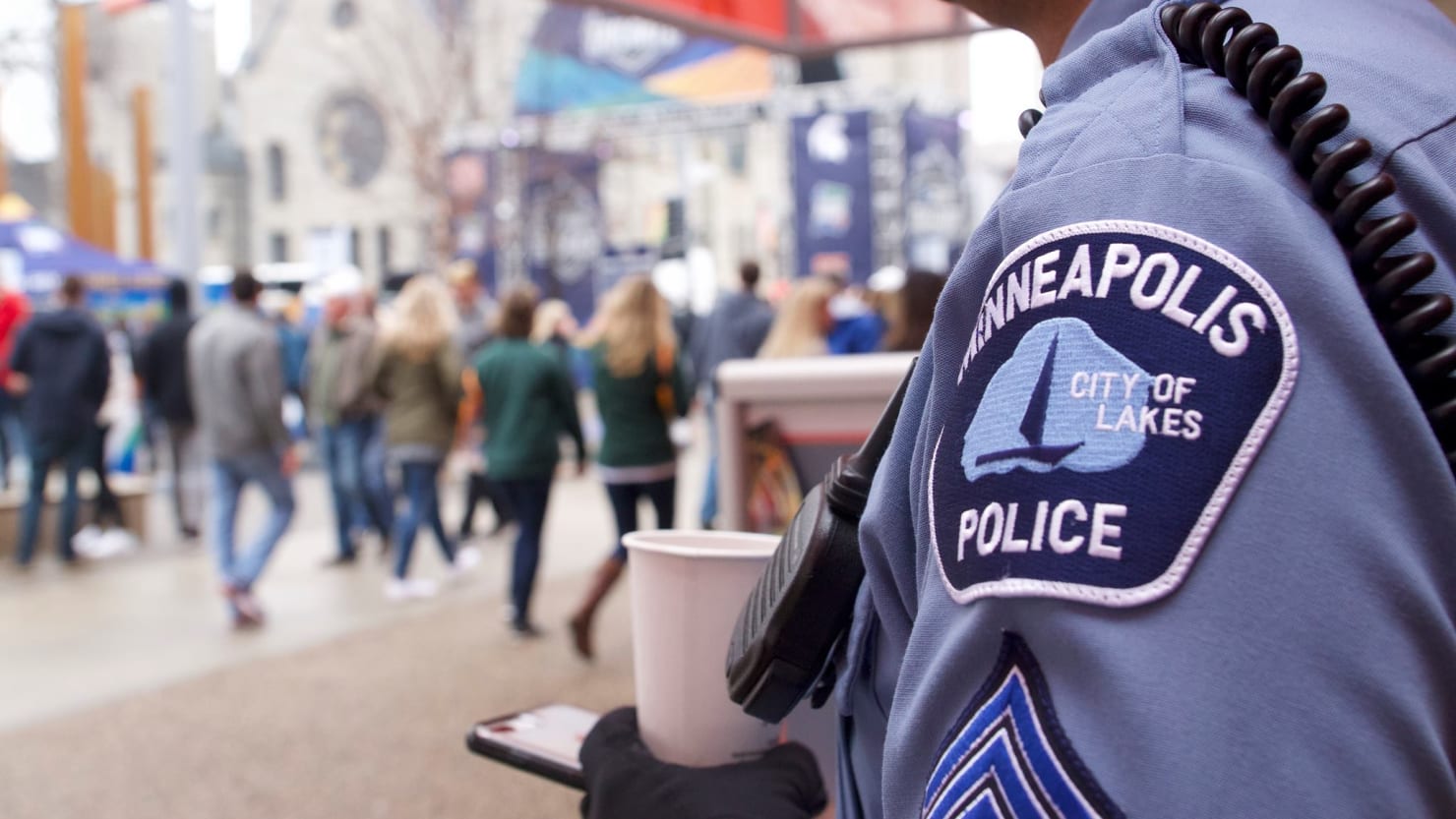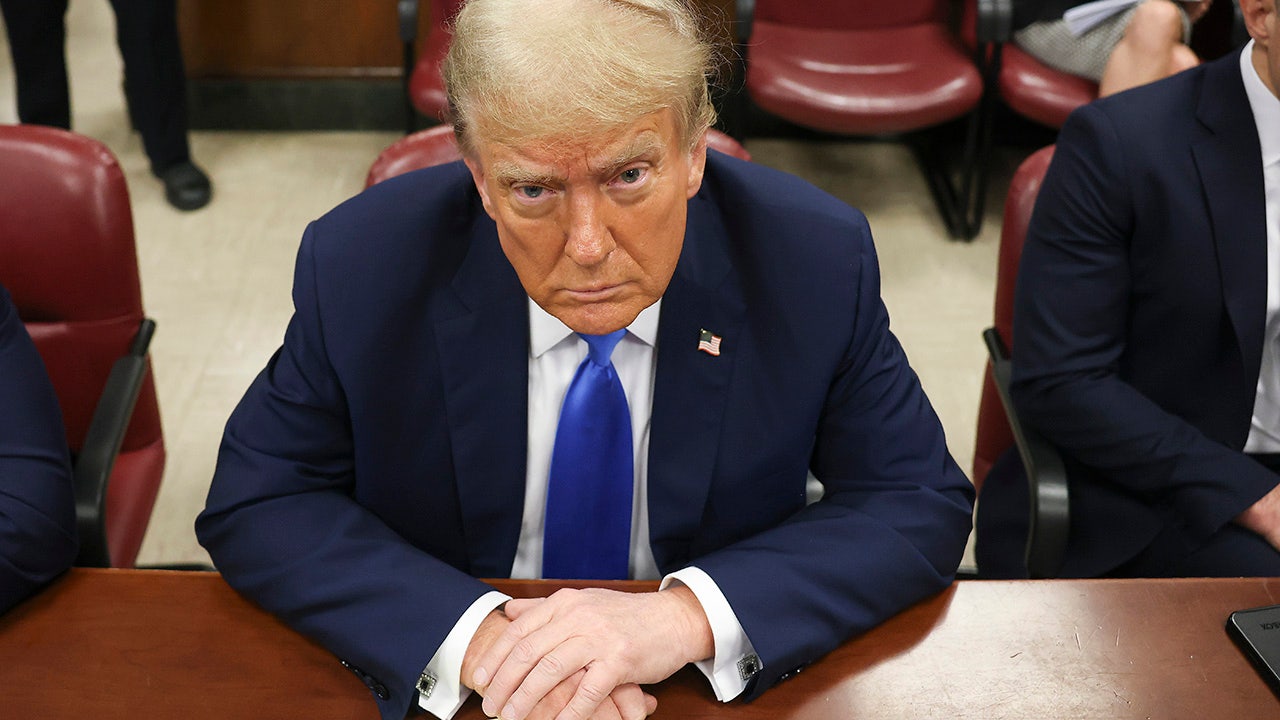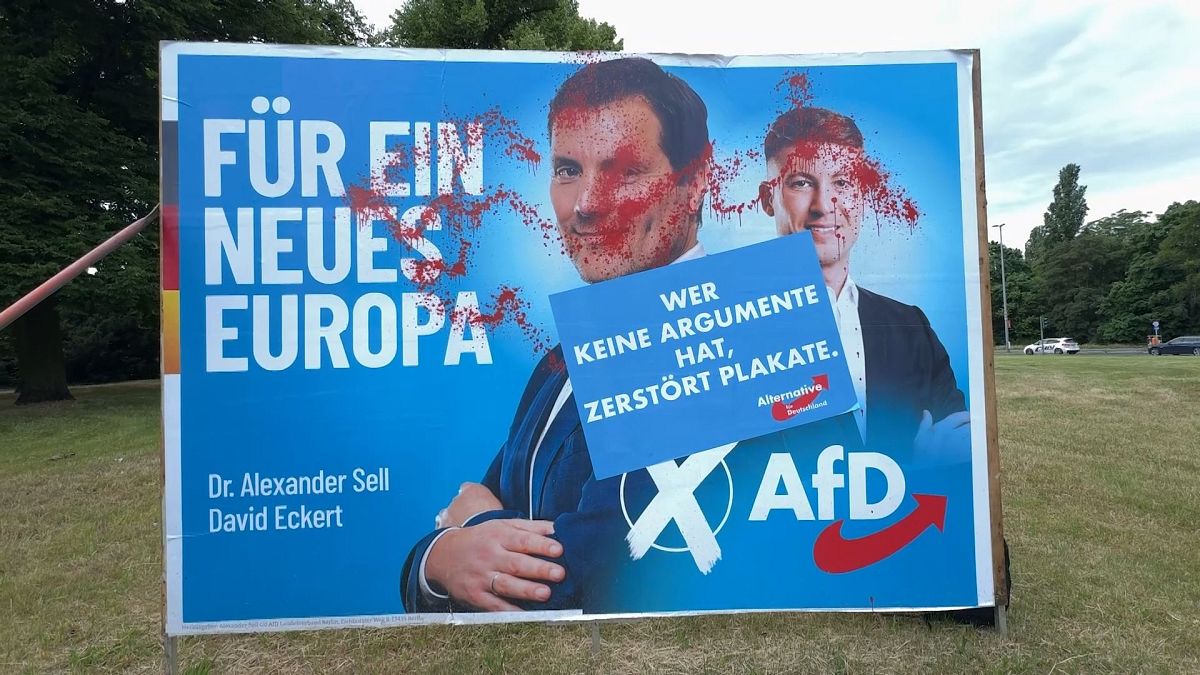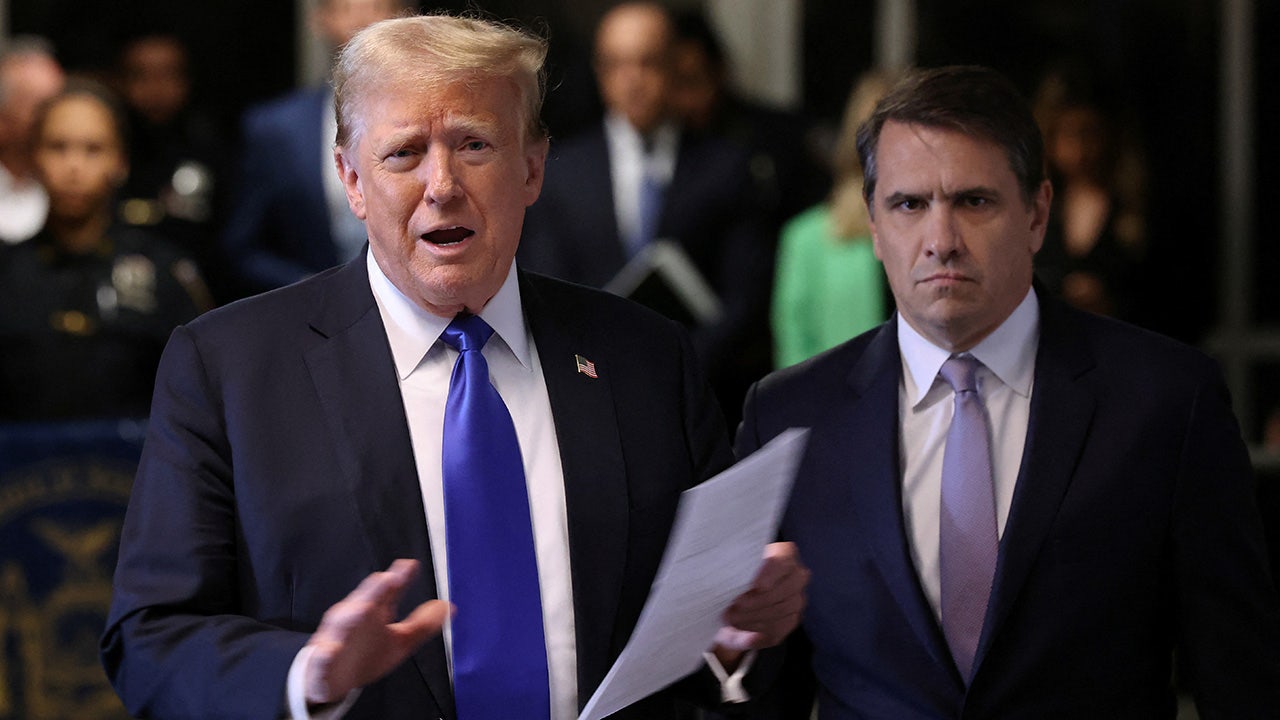Maryland
Dobbs Comes to Maryland – The American Conservative
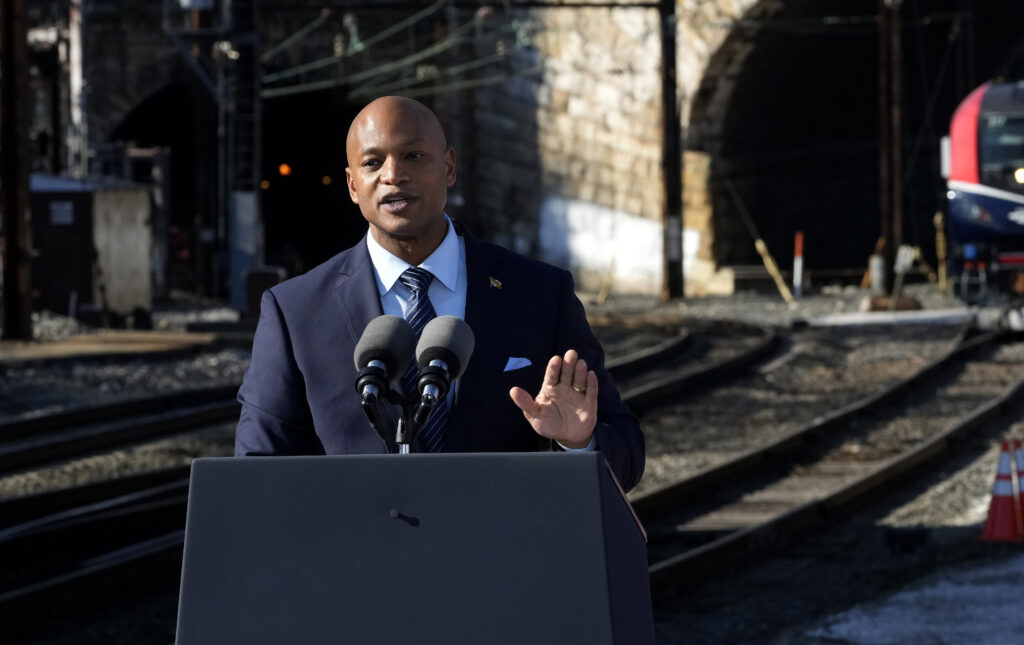
The Dobbs decision brought an end to the federal regime of abortion-on-demand, with only a vague “mental health” standard previously limiting third-trimester abortions. Abortions are no longer available with certainty.
The screams that the decision provoked have been equaled only by those accompanying the Welfare Reform Act of 1996, with its time limits and work requirements. Yet when word got out that teenage pregnancy did not bring with it economic independence and 18 years of assured cash payments, the teenage pregnancy rate fell from 213 per 1000 in 1990 to 65 per thousand in 2016.
No longer do Baltimoreans and Marylanders have occasion to decry three-generation welfare families. Yet it has not yet dawned on Governor Wes Moore of Maryland or Mayor Brandon Scott of Baltimore that the uncertainty induced by Dobbs may be a similar gift to Baltimore and Maryland in addressing their most serious social problem: family breakdown and the attendant crime and delinquency.
Each day shows us that Roe v. Wade was a social disaster. Contrary to the premise of Justice John Marshall Harlan’s concurring opinion that unwed motherhood would almost disappear, the percentage of white children born out of wedlock increased from 3.1 percent in 1965 to 27.5 percent in 2021; among black Americans, it skyrocketed from 24 percent to 70.1 percent.
So-called shotgun weddings declined from 59 percent of unwanted pregnancies to 9 percent. Unimpeachable scholars, Professor Janet Yellen, now Secretary of the Treasury, and her husband, Nobel-winning economist George Akerlof, showed in a 1996 study that the change was due to altered abortion rules and resulting changes in mores, what they called “reproductive technology shock.”
The increased availability of contraception and abortion made shotgun weddings a thing of the past. Women who were willing to get an abortion or who reliably used contraception no longer found it necessary to condition sexual relations on a promise of marriage in the event of pregnancy…women feared that if they refused sexual relations they would lose their partners. Sexual activity without commitment was increasingly expected.
Many less privileged women, relying on the new-found right as a “backup,” discovered that—because of ignorance, procrastination, lack of means, parental pressure, fear of losing the ability to conceive, or a maternal instinct to protect the fetus—they did not want or could not obtain an abortion. For their consorts, the newly discovered right operated as a hunting license.
The Dobbs decision is thus cause for rejoicing. Situation ethics is no longer a rule of constitutional law. The ruling already appears to be inducing greater care in the choice of sexual partners, the use of precautions, and a reduced rate of unwed motherhood. The consequences of a 70 percent rate of unwed motherhood in certain populations may be invisible to privileged professionals and journalists, but even Baltimore’s unionized schoolteachers are highly aware of it.
Of course, the legislation that states enact must be drafted with a view to prudence as well as principle. Laws that are unenforceable bring the law into disrepute. Surgical abortions, denials of the purposes of medicine, were long condemned. Not so pills, whose use can be punished only with difficulty, a gift to the underworld.
Simone Veil, a Holocaust survivor and later president of the European Parliament, when sponsoring French abortion law reform as health minister in the Giscard government, urged “not allowing abortions to produce scandalous profits…. Foreign women will have to fulfill conditions of residence…. Information about birth control [is] an obligation, on pain of administrative closure, for the establishments where abortions are performed.”
Further, she advised that medical and social consultations and a waiting period be provided to ensure that “this is not a normal or banal act but a serious decision…the pregnancy can only be terminated early because … [of] intrinsic physical and psychological risks of terminating a pregnancy after the end of the tenth week following conception…When one knows that dentistry, non-mandatory vaccinations and prescription glasses are not or are only minimally reimbursed by the healthcare system, how can it be acceptable to reimburse a termination of pregnancy? Medical aid has been provided for, for the most destitute…. the law no longer forbids, it does not create a right to abortion.”
Yet the responses of Maryland’s Moore and Baltimore’s Scott to Dobbs have been perverse, abandoning the erstwhile pretense that abortions should be “safe, legal, and rare.” Instead, they are now some sort of blessed sacrament, the subject not of tolerance but of promotion.
As Baltimore’s own H.L. Mencken wrote nearly a century ago, “Nor is the moral virtuoso made more prepossessing when he takes the Devil’s side and howls for license instead of for restraint. The birth controllers, for example, often carry on their indelicate crusade with the pious rancor of prohibitionists.” But abortion law affects not only those already pregnant, but those not yet pregnant, now rendered more cautious by potential perils that lie ahead: economic burdens in middle age, loneliness when old.
Maryland’s governor has proposed a constitutional amendment that would sweep away the remaining feeble restrictions on third-term abortions—making way for, among other things, non-doctors to perform them—and enacting laws of dubious constitutionality precluding Maryland courts from honoring the subpoenas of neighboring states. The mayor proposes to stockpile abortion pills. He thus gives force to Mencken’s prophecy that if there were a substantial number of cannibals in the electorate, politicians would promise them regular meals of grilled missionary. If assisted suicide becomes more fashionable, Mayor Scott will no doubt want to stockpile strychnine also.
Baltimore is to be rendered an abortion Mecca, a curious economic development decision given the failure of previous administrations to encourage financial institutions fleeing New York in the 1980s to relocate there and its active repulsion in the 1980s of immigrants, including those fleeing Hong Kong.
The efforts to undermine the policies of neighboring states are especially repulsive. General De Gaulle once wrote of pre-Roe America that “the central government and Congress normally confine themselves to larger matters: foreign policy, civic rights and duties, defense, currency, overall taxes and tariffs. For these reasons, the system has succeeded in functioning up to now in the north of the New World.”
Subscribe Today
Get weekly emails in your inbox
National legislation where public opinion is evenly divided will produce only continued dissension. In most American states, divisions are far from even, and those dissatisfied with each state’s law will make up a much smaller portion of the nation’s population.
One must ask: How would Governor Moore or Mayor Scott like it if Governor Glenn Youngkin of Virginia were to offer inner-city Baltimore residents free bus transportation to the nearest Virginia gun shop in order to subvert the Old Line State’s efforts at firearms control?
Baltimore’s vital interest in socializing its minority young is being subordinated to a vote-buying agenda promising short-sighted college coeds a moral climate fostering situation ethics and free love. As the post-Dobbs statistics relating to unwed motherhood improve, it is to be hoped that the governor and mayor will withdraw from their exposed positions.

Maryland
Maryland hopes to recruit young dentists to workforce shortage areas – Maryland Matters

Maryland has about 70 dentists per 100,000 residents, according data from the Centers for Disease Control and Prevention in 2020, but that doesn’t mean that they are equally distributed across the state.
State health officials and dental health advocates say that Baltimore and parts of the Eastern Shore and Western Maryland not only lack dentists, but have other barriers that make it difficult for residents to keep up with their oral health.
The Maryland Department of Health aims to change that with a new program urging dental students to launch their careers in areas with dental health care shortages.
The Pathways to Bright Futures program, which launched Wednesday, will educate those students about the dentistry profession in hopes of easing shortage in targeted areas.
Dr. Nilesh Kalyanaraman, the health department’s deputy secretary for public health services said Wednesday that fixing the workforce shortage “won’t be easy and is not going to happen overnight,” but improving access to dental services will help improve overall health equity in Maryland.
“When I think about our vision for health equity in Maryland, I see everyone in our state having a fair and just opportunity to be as healthy as possible. It’s going to take hard work … to ensure that health equity includes healthy mouths, teeth and gums for all Marylanders,” he said.
Dr. Debony Hughes, director of the department’s Office of Oral Health, said that many areas in Western Maryland, the Eastern Shore and Baltimore have fewer than 20 dentists per 100,000 residents, well below the national average of 61 dentists per 100,000 residents.
“This program is a collaborative effort to work with students and foster their interests in the oral health field and provide support to those who know they want to practice in the profession,” Hughes said Wednesday during the program kickoff at the Dr. Samuel D. Harris National Museum of Dentistry in Baltimore
Pathways to Bright Futures is funded by a grant to the state from the federal Health Resources and Service Administration. At Wednesday’s event, six dental health students were awarded funds to help pay their dental school tuition.Each of the students plan to practice dentistry in one of the state’s dental shortage areas.
“Cavities in children and adults, and gum disease especially in adults, are among the most prevalent chronic diseases in the United States,” Kalyanaraman said. “The main reason why oral disease is so prevalent is that far too many Marylanders experience barriers to preventative and essential dental care.”
He noted that when Maryland dentists set up their practice, they tend to gather in “more populated and higher income areas, creating significant gaps in access to dental care across other regions of the state.”
“This shortage creates an uneven distribution of dental professionals across the state, which leads to decreased access to dental care, especially in already underserved communities,” Kalyanaraman said.
Dr. George Shepley, a general dentist in Baltimore since 1978 who previously served as president of the American Dental Association, said dental care can help identify other health needs.
“They’re connected. Totally. Especially with things like diabetes and cardiac disease,” Shepley said Wednesday. “And in the world of dentistry, you’ll get insight into well-being overall. You’ll help diagnose other conditions and empower people to really take responsibility for their lives.”
Mary Backley, CEO of the Maryland Dental Action Coalition, said there are a multitude of logistical and economic barriers that can make it challenging for some Marylanders to get to a dental appointment.
Besides a lack of equal access to the state’s 4,300 registered dentists, another issue in dentist shortage areas is transportation, particularly for the more rural communities in Western Maryland and on the Eastern Shore.
“The biggest barriers, rural-wise, is the distance … It can take miles and miles and miles to get to a provider,” Backley said after Wednesday’s event.
Baltimore residents are more likely to be face a long waitlist to get a dental appointment, according to Backley. And both rural and city residents may struggle to afford child care or take time off work to go to the dentist in the first place.
There are also financial hurdles that make it harder for families to afford a trip to the dentist.
As of January 2023, Medicaid in Maryland began to cover certain dental services for adults. And the General Assembly this year passed legislation to study the feasibility of including full and partial dentures under Medicaid coverage. Gov. Wes Moore (D) signed the bill in May.
The state Medicaid expansions can help many low-income families receive dental health care, so long as they have access to a provider that accepts Medicaid. Not all dentists in Maryland do.
Backley hopes that the Pathways to Bright Futures program will encourage more young people to look to dentistry as a career path and help fill in some of the coverage gaps in the state.
On the bright side, Backley said that residents and Maryland health officials are taking dental health care seriously.
“It’s been incremental, but each year there has been progress,” she said. “People understand the importance of oral health. And the importance of oral health to overall health.”
Maryland
Fines For Speeding In MD Work Zones To Double Starting June 1

MARYLAND — Fines for speed camera violations are set to spike on Saturday when a new law designed to better protect road workers goes into effect, the Maryland Department of Transportation reminded motorists this week.
Beginning June 1, fines will increase from $40 to $80, state officials said in a news release. The increase is part of the Maryland Road Worker Protection Act, which Gov. Wes Moore signed into law in April.
In January 2025, speed violation fines will then convert to a tiered system based on how fast the vehicle is traveling above the speed limit. Fines range from $60 to $500 and will double if road workers are present, state officials said.
The new law also allows speed cameras to be placed in more work zones across the state. In larger work zones, more than one camera may be deployed, officials said.
Cameras will be equipped with flashing blue lights to alert motorists, according to the state.
The new law was first introduced in January, 10 months after six highway workers were killed when a car traveling more than 120 mph struck them on the Baltimore Beltway.
“Last March, Marylanders stood with broken hearts from the work zone crash on I-695 in which six highway workers’ lives tragically ended in a moment,” Maryland Lt. Gov. Aruna Miller said at the bill signing in April, according to the Baltimore Banner. “It’s a moral imperative that we protect road workers who provide critical service.”
Between 2018 and 2022, there were 7,193 work zone crashes in Maryland, or roughly 1,500 each year, according to state data. Forty-four people were killed in those crashes and 2,769 were injured.
Many of the victims were highway workers, but others are drivers and their passengers. In 2023, 12 people died in work zone crashes and other eight have died so far in 2024. This includes 14 workers and six drivers and passengers, state officials said.
Maryland
Larry Hogan: How the federal government can fight carjacking rings in Maryland | GUEST COMMENTARY

One alarming aspect of the current crime wave is the dramatic increase of both violent and property crime in areas of Maryland that have not seen similar surges in the past. That’s exactly what is happening in Prince George’s and Montgomery counties, which are suffering from rapid increases in rates of violent crimes, carjackings and robberies. In just the past few years, crime has exploded in these counties from a secondary concern to now ranking as the top concern for residents. Local and state leaders are unable to address this crisis alone — in the Senate, I will make sure the federal government steps up to be the real partner Maryland needs.
Organized carjacking rings are a major source of the problem. In Prince George’s County alone, carjackings have increased almost 600% since 2019 and are on track to increase even more this year. These rings often operate by recruiting teenagers. Well-intentioned but reckless efforts to keep juveniles out of the criminal justice system have made it virtually impossible to hold them accountable and offer real rehabilitation.
While we must continue to work to address the long-term root causes of crime, provide more and better mental health resources, and help those who have paid their debts successfully re-enter society, we cannot afford to avoid taking immediate action to get violent criminals off the streets.
In 2022, when I was governor, my administration showed that this could be done effectively in Baltimore City by leveraging federal resources. When then-State’s Attorney Marilyn Mosby was failing to prosecute crimes, we worked with the U.S. Attorney for Maryland, Erek Barron, to deploy strategic federal assets to get the job done, providing millions of state funding to support additional prosecutors and staff, including 10 additional Special Assistant United States Attorneys for the Baltimore Office. These prosecutors pursued the “Al Capone model” of pursuing federal firearms, fraud and other criminal charges against individuals known to be repeat violent offenders.
That same year, amid cuts to police funding by some local jurisdictions, we advanced our $500 million Re-Fund the Police initiative, which provided a 50% increase in state aid to local police for historic salary increases and bonuses for law enforcement officers, support for victim services, and more funding for training and technology. Starting in August 2022, murders in Baltimore began to decline compared to the prior year. This trend continued for five out of the next six months before I left office and thankfully continued through 2023.
We must adopt this proven approach at the federal level as a critical tool in our crime-fighting toolbox. On day one in the Senate, I will get to work to surge resources to hire federal prosecutors who will focus on breaking up these carjacking gangs and other organized crime. Despite our investments in law enforcement, this funding and support is not always matched by local leaders. Just in the past week, we met with the Prince George’s FOP, Anne Arundel FOP and federal law enforcement to hear about the resources they need to get the job done. We need a federal Re-Fund the Police initiative with greater training for law enforcement, more school resource officers, and funding to solve violent crimes that are terrorizing our communities and eroding the quality of life for too many Marylanders.
This is only the start of what the federal government must and can do to tackle crime across not just Mayland, but all across the country. We need to pass tougher federal penalties for criminals who use illegal guns and encourage states to implement red flag laws to get guns out of the hands of the mentally ill. We need to be proactive about leveraging the federal laws on the books, such as increased penalties for firearms in school zones and other federally-designated locations, to get repeat violent offenders off the street.
Crime is on the top of the minds of Marylanders and Americans, but — like most pressing issues of the day — Washington politicians only offer platitudes and point fingers. That must change. We can no longer allow politics to get in the way of public safety. There are bipartisan common sense solutions the federal government can adopt that will make a real difference. In the Senate, I will make it a top priority to bring people in both parties together to get this done, support our law enforcement, and make our communities safer.
Larry Hogan (info@larryhogan.com) was the 62nd governor of Maryland and is the state’s Republican nominee for the U.S. Senate seat being vacated by retiring Sen. Ben Cardin.
-

 Culture1 week ago
Culture1 week agoFrom Dairy Daddies to Trash Pandas: How branding creates fans for lower-league baseball teams
-

 News1 week ago
News1 week agoThe states where abortion is on the ballot in November : Consider This from NPR
-
News1 week ago
Trump's social media account shares a campaign video with a headline about a 'unified Reich'
-

 News1 week ago
News1 week agoRead Prosecutors’ Filing on Mar-a-Lago Evidence in Trump Documents Case
-

 Politics1 week ago
Politics1 week agoMichael Cohen swore he had nothing derogatory on Trump, his ex-lawyer says – another lie – as testimony ends
-

 Politics1 week ago
Politics1 week agoAnti-Israel agitators interrupt Blinken Senate testimony, hauled out by Capitol police
-

 Politics1 week ago
Politics1 week ago2024 showdown: Trump tops Biden in April campaign cash dash
-

 News1 week ago
News1 week agoBuy-now, pay-later returns and disputes are about to get federal oversight



